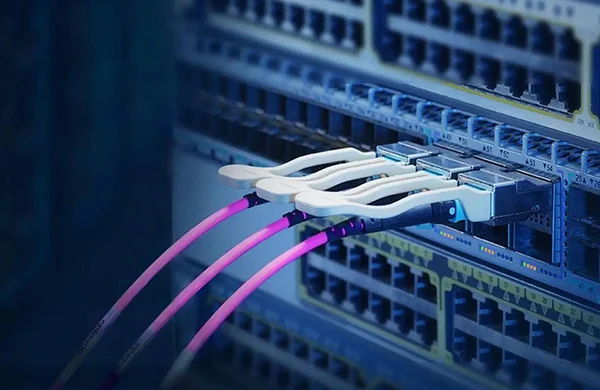Transceiver modules are pivotal components in modern communication networks, serving as the backbone for data transmission across various platforms. These modules convert electrical signals to optical signals and vice versa, facilitating high-speed data communication. With the rapid advancements in technology, understanding transceiver modules and their developments is crucial for anyone involved in network design, data centers, and telecommunications. This article delves into how transceiver module technology works, its importance, current trends, and future developments.
Understanding Transceiver Module Technology
Definition and Functionality
Transceiver modules are devices that transmit and receive data in the form of light signals over fiber optic cables. They play a critical role in enabling high-speed internet, telecommunications, and data center operations. The most common types include Small Form-Factor Pluggable (SFP), Quad Small Form-Factor Pluggable (QSFP), 10 Gigabit Small Form-Factor Pluggable (XFP), and C Form-Factor Pluggable (CFP).
Types of Transceiver Modules
- SFP (Small Form-Factor Pluggable): Commonly used for Ethernet and Fibre Channel applications.
- QSFP (Quad Small Form-Factor Pluggable): Supports higher data rates and is used in data centers.
- XFP (10 Gigabit Small Form-Factor Pluggable): Operates at 10 Gbps and is hot-swappable.
- CFP (C Form-Factor Pluggable): Designed for high-speed digital signal transmission.
Components of Transceiver Modules
Transceiver modules comprise several key components:
- Optical Components:
- Laser Diodes: Emit light for data transmission.
- Photodetectors: Convert received light into electrical signals.
- Electrical Components:
- Transimpedance Amplifiers: Amplify weak signals from photodetectors.
- Modulators: Encode data onto the optical signal.
These components work in unison to ensure efficient data transmission and reception.
Working Principle of Transceiver Modules
Signal Transmission Process
- Data Encoding: Electrical data signals are encoded onto an optical signal using a laser diode.
- Light Emission: The laser diode emits light carrying the encoded data through the fiber optic cable.
- Transmission Medium: The optical signal travels through the fiber optic cable, which offers minimal signal loss and high-speed transmission.
Signal Reception and Conversion
- Light Detection: The photodetector receives the optical signal at the destination.
- Signal Conversion: The received light is converted back into electrical signals.
- Data Decoding: The electrical signals are decoded to retrieve the original data.
Current Trends in Transceiver Module Technology
Increased Data Rates and Bandwidth
Advancements in modulation techniques and the development of high-speed interfaces, such as 400G and 800G, have significantly increased data rates and bandwidth capabilities of transceiver modules.
Miniaturization and Higher Density Modules
The trend towards smaller form factors and higher density modules allows for more functions to be integrated into compact designs, enabling efficient space utilization in data centers.
Advances in Optical Technology
- Wavelength Division Multiplexing (WDM): Allows multiple data channels to be transmitted on a single fiber by using different wavelengths.
- Coherent Optics: Enhances signal quality and extends transmission distances, making it ideal for long-haul communication.
Energy Efficiency and Power Consumption Improvements
New designs focus on reducing power consumption while maintaining high performance, which is crucial for sustainable data center operations.
Integration with Other Networking Equipment
Modern transceiver modules are designed to be compatible with a wide range of networking equipment, ensuring seamless integration and interoperability.
Developments in Transceiver Module Applications
Data Centers and Cloud Computing
Transceiver modules are essential for enhancing data center interconnects and supporting high-speed data transfer, which is vital for cloud computing applications.
5G Networks and IoT
Transceiver modules facilitate high-speed mobile connectivity and enable communication between IoT devices, playing a critical role in the deployment of 5G networks.
High-Speed Internet and Telecommunications
These modules improve broadband services and support long-haul and metro networks, ensuring reliable and fast internet connectivity.
Importance of Transceiver Module Technology
Transceiver modules enhance network performance and reliability by reducing latency and increasing data throughput. They enable scalability and flexibility in network design, allowing for easy upgrades and expansions. Additionally, they reduce operational costs through efficient energy use and lower maintenance requirements.
Challenges in Transceiver Module Technology
Signal Integrity Issues: Maintaining signal quality over long distances can be challenging due to factors like attenuation and dispersion.
Thermal Management Challenges: Efficient heat dissipation is crucial in compact module designs to prevent overheating and ensure reliable operation.
Ensuring Compatibility and Interoperability: Standards compliance and seamless integration with existing network infrastructure are essential for the successful deployment of transceiver modules.
Bandwidth Demand: Keeping up with the growing demand for bandwidth is a continuous challenge, necessitating ongoing innovation and development.
Solutions and Innovations
Advanced Cooling Solutions: Innovative cooling techniques are being developed to manage heat in dense module designs, ensuring optimal performance.
Development of Multi-Rate Transceivers: Versatile transceivers that can operate at different network speeds are becoming more common, offering greater flexibility.
Use of Machine Learning for Network Optimization: Machine learning algorithms are being employed to optimize network performance and predict maintenance needs.
Innovations in Photonic Integration: Combining multiple optical functions on a single chip is an emerging trend that promises to enhance transceiver module capabilities.
Must Read: How To Use Website Effectively For Selling Your Software?
Future Outlook
Predictions for the Next 5-10 Years: The next decade is expected to see significant advancements in transceiver module technology, driven by the increasing demand for high-speed connectivity and data transfer.
Potential Breakthroughs and Innovations: Emerging technologies, such as AI and quantum computing, are likely to influence the development of transceiver modules, leading to more efficient and powerful designs.
Impact on Global Communication Infrastructure: Future developments in transceiver module technology will shape global communication networks, enabling faster and more reliable data transmission.
Emerging Technologies and Their Influence: The integration of AI, quantum computing, and other advanced technologies will play a crucial role in the evolution of transceiver modules.
In the Final Analysis
Transceiver modules are indispensable in modern communication networks, facilitating high-speed data transmission and supporting a wide range of applications. Staying updated with the latest trends and developments in this technology is essential for leveraging its full potential and preparing for future advancements.








